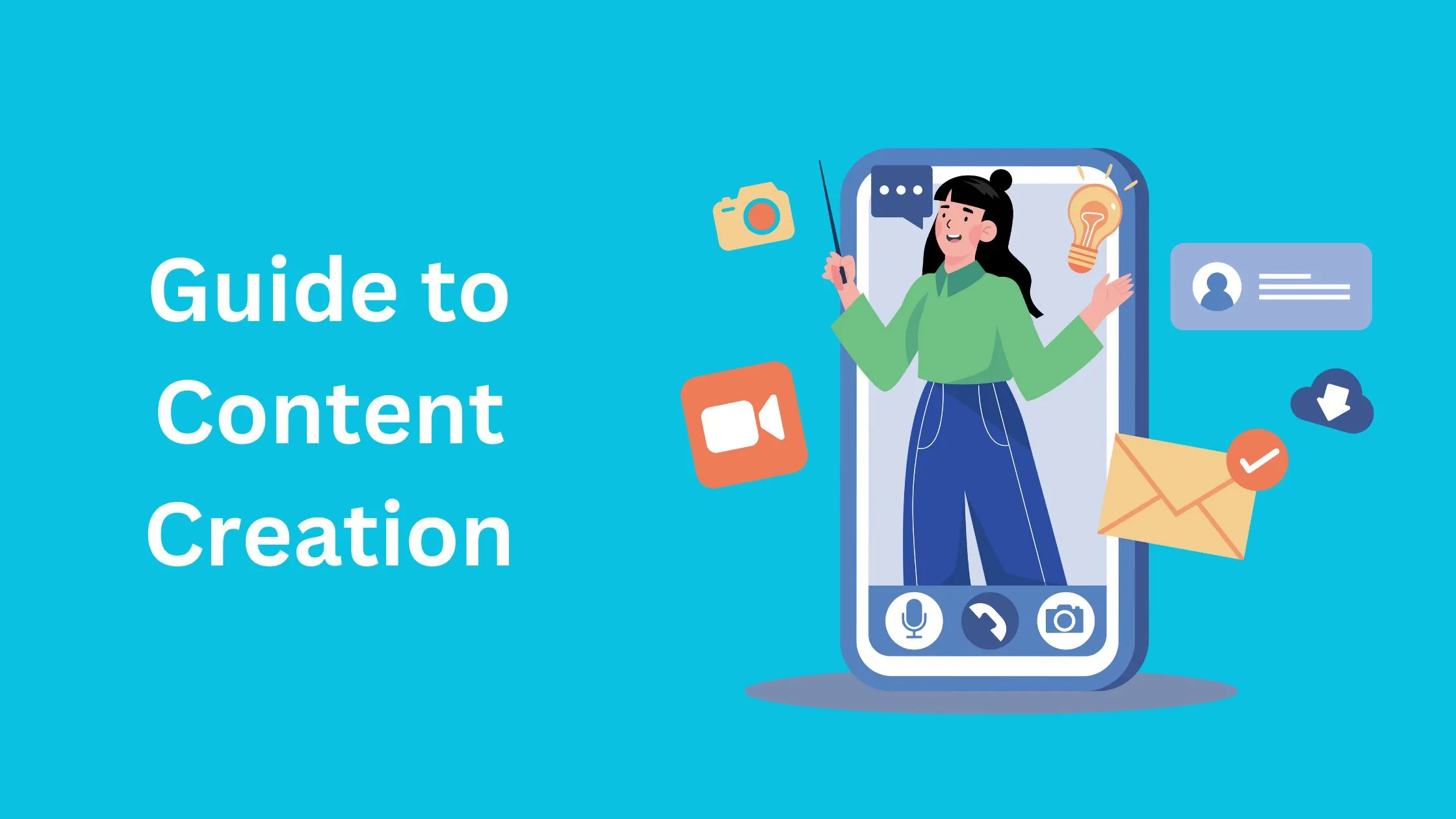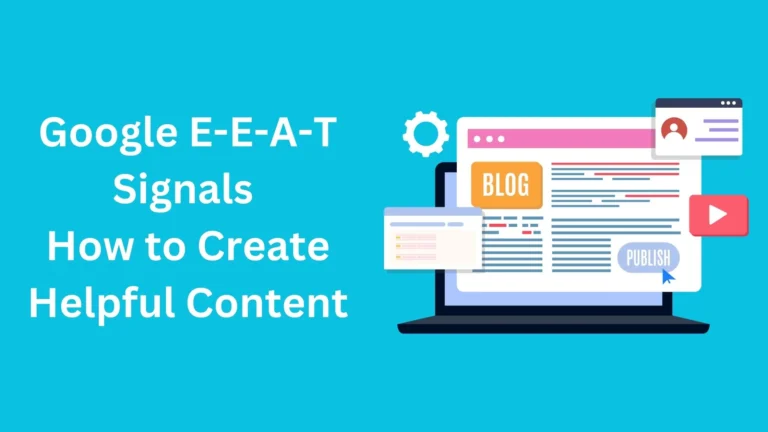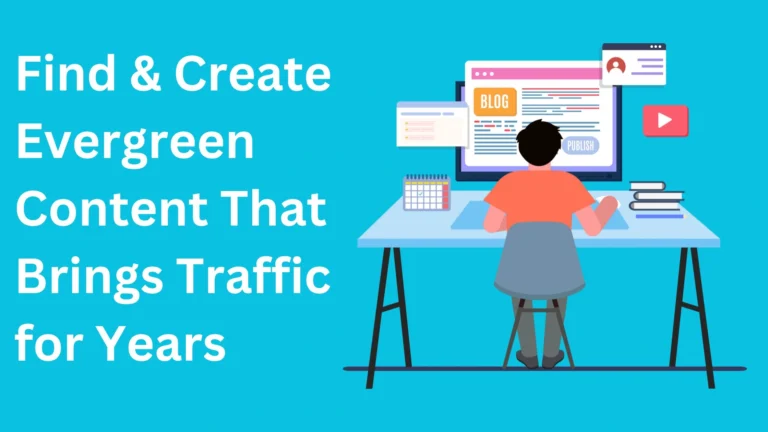The Ultimate Guide to Content Creation: Crafting Helpful, Evergreen, and High-Impact Content

How to create a content – A step by step guide
Nowadays, creating a content that stands out is both an art and a science. Whether you’re a business owner, marketer, or creator, producing content that is helpful, evergreen, and high-impact is key to building a loyal audience, establishing authority, and achieving long-term success. This comprehensive guide serves as your roadmap to crafting such content, breaking down the process into actionable steps. From understanding your audience to measuring performance, we’ll cover everything you need to create content that resonates and endures.
What is Content Creation?
Content creation is the process of producing valuable, relevant, and consistent material to attract and engage a specific audience. This can include blog posts, videos, infographics, podcasts, social media posts, and more. Content is the cornerstone of digital presence, driving traffic, building brand credibility, and converting visitors into customers or followers.
Why is Content Creation Important?
High-quality content delivers multiple benefits:
- Establishes Authority: Positions you as a thought leader in your niche.
- Builds Trust: Provides value that fosters audience loyalty.
- Drives Traffic: Attracts organic visitors through search engines.
- Encourages Engagement: Prompts shares, comments, and interactions.
- Supports Conversions: Turns readers into subscribers, leads, or customers.
However, not all content achieves these outcomes. To truly stand out, your content must be:
- Helpful: Solves a problem, answers a question, or provides actionable value.
- Evergreen: Remains relevant and useful over time, untied to fleeting trends or events.
- High-Impact: Resonates deeply, encouraging actions like sharing, subscribing, or purchasing.
This guide outlines a strategic approach to creating content that meets these criteria, ensuring it delivers value long after publication.
Step 1: Understanding Your Audience
Why Audience Understanding Matters
The foundation of effective content creation is knowing your audience. Tailored content resonates more deeply, increases engagement, and drives better results. Without this understanding, your content risks being irrelevant or ignored—even if it’s well-written or visually appealing.
How to Identify and Understand Your Audience
To create content that connects, gather insights about your audience:
- Use Analytics Tools: Platforms like Google Analytics (Google Analytics) reveal who visits your site, their demographics, and their interests.
- Conduct Surveys or Interviews: Engage directly with customers to uncover their challenges, goals, and preferences.
- Analyze Social Media: Monitor followers, engagement, and questions on platforms like X or LinkedIn to identify trending topics or pain points.
- Monitor Customer Inquiries: Review questions received via email, social media, or customer support to pinpoint common concerns.
These methods help you build a clear picture of your audience’s needs and behaviors, enabling you to craft content that speaks directly to them. If you need a complete campaign setup to understand better, look at our blog – what is campaign
Creating Buyer Personas
A buyer persona is a fictional representation of your ideal audience member, based on real data. Include details such as:
- Demographics: Age, gender, location, job title.
- Interests: Hobbies, preferred platforms, content types.
- Pain Points: Challenges or problems they face.
- Goals: Aspirations or desired outcomes.
For example, a persona for a fitness blog might be “Sarah, a 30-year-old working professional who wants quick, effective workouts to stay healthy.”
Using Personas in Content Creation
Use personas to:
- Write in a tone and style that resonates with your audience.
- Address specific pain points and questions.
- Provide solutions or insights tailored to their needs.
| Persona Component | Example for Fitness Blog |
|---|---|
| Demographics | 30-year-old female, urban, professional |
| Interests | Quick workouts, healthy recipes |
| Pain Points | Lack of time for exercise |
| Goals | Stay fit, improve energy |
By grounding your content in audience insights, you ensure it’s relevant and impactful.
Step 2: Developing a Content Strategy
What is a Content Strategy?
A content strategy is a plan that outlines how you’ll create, distribute, and measure content to achieve specific goals. It ensures alignment with your business objectives and audience needs, preventing wasted effort on content that doesn’t deliver results.
Steps to Create an Effective Content Strategy
- Define Your Goals: Use SMART goals (Specific, Measurable, Achievable, Relevant, Time-bound). Examples include increasing website traffic by 20% in six months or generating 100 new leads per month.
- Identify Your Audience: Leverage the personas from Section 1 to focus on your target readers.
- Choose Your Topics: Select topics that align with your goals and audience interests, prioritizing evergreen subjects for long-term value.
- Select Content Formats: Decide on blog posts, videos, podcasts, or infographics based on audience preferences and platform suitability.
- Plan Distribution: Determine where to share content, such as social media, email newsletters, or industry forums.
- Set a Publishing Schedule: Consistency builds trust. Aim for a realistic cadence, like one blog post per week or two social media posts daily.
Aligning Content with Business Goals
Ensure your content supports broader objectives:
- Lead Generation: Create gated content like ebooks or webinars to capture contact information.
- Brand Awareness: Produce shareable formats like videos or infographics to reach new audiences.
- Customer Retention: Offer tutorials or tips to keep existing customers engaged.
| Business Goal | Content Type | Example |
|---|---|---|
| Lead Generation | Ebook | “10 Tips for Better Budgeting” |
| Brand Awareness | Video | “Why Fitness Matters” |
| Customer Retention | Tutorial Blog | “How to Use Our App” |
A well-defined strategy keeps your content focused and effective, maximizing its impact.
Step 3: Research and Planning
Finding Evergreen Topics
Evergreen topics remain relevant over time, providing sustained traffic and authority. Examples include:
- “How to Start a Blog”
- “Best Practices for Social Media Marketing”
- “Guide to SEO”
To identify them:
- Review Audience Questions: Look at recurring queries from customer support, social media, or forums.
- Analyze Top Content: Study high-performing content in your niche to identify gaps or opportunities.
- Use Tools: Platforms like Google Trends (Google Trends) show topics with consistent search interest over time.
You can checkout our essential guide on “how to create a evergreen content?”
Conducting Keyword Research
Keywords connect your content to searchers. Use tools like Google Keyword Planner (Google Keyword Planner) to:
- Find keywords with good search volume and low competition.
- Focus on long-tail keywords (e.g., “how to create evergreen blog posts”) for targeted traffic.
- Incorporate primary and secondary keywords naturally to improve SEO without compromising readability.
Structuring Your Content Plan
A content calendar organizes your efforts. Include:
- Publishing Dates: When each piece goes live.
- Topics and Formats: Blog post, video, etc.
- Assigned Roles: Who’s responsible for creation and review.
- Promotion Plans: How you’ll share the content.
Tools like Trello or Google Sheets can streamline this process, ensuring you stay on track.
| Date | Topic | Format | Status |
|---|---|---|---|
| 06/01/25 | How to Budget | Blog Post | Drafting |
| 06/08/25 | SEO Basics | Video | Planning |
Thorough research and planning lay the groundwork for content that’s both relevant and enduring.
Step 4: Writing and Creating Content
Best Practices for Writing Engaging Content
- Use Clear Language: Avoid jargon unless your audience expects it, and keep sentences concise.
- Structure Content: Use headings, subheadings, bullet points, and lists for readability.
- Tell Stories: Narratives make content relatable and memorable, such as a case study illustrating a point.
- Provide Actionable Advice: Offer steps readers can implement immediately, like a checklist or how-to guide.
Incorporating Multimedia Elements
- Images: Use high-quality visuals to illustrate points and break up text.
- Infographics: Simplify complex data or processes for quick understanding.
- Videos: Add tutorials or explainers to boost engagement and cater to visual learners.
Ensuring Content is Helpful and Valuable
- Solve a specific problem or answer a question your audience has.
- Provide comprehensive, in-depth information to establish authority.
- Include practical examples, like a step-by-step guide to setting up a blog or a sample social media strategy. Visit our blog – how to create helpful content with EEAT standards
Ensuring Longevity of Content
To make content evergreen:
- Choose Timeless Topics: Focus on fundamental skills or issues, like “How to Budget” instead of “2025 Tax Tips.”
- Avoid Time-Sensitive References: Skip specific dates, events, or trends that may become outdated.
- Plan for Updates: Schedule periodic reviews (e.g., every 6–12 months) to refresh data, examples, or links.
- Use Evergreen Keywords: Target terms with consistent search volume, such as “what is SEO” or “how to start a business.”
By following these practices, your content will remain engaging and relevant for years.
Step 5: Optimization for Search Engines
On-Page SEO Techniques
- Optimize Titles and Meta Descriptions: Include target keywords naturally, keeping titles under 60 characters and meta descriptions under 160 characters.
- Use Headings: Structure with H1 for the main title and H2/H3 for sections to improve readability and SEO.
- Add Alt Text: Describe images with keyword-rich alt text for accessibility and search visibility.
- Internal Linking: Link to other relevant content on your site to keep readers engaged and help search engines understand your site’s structure.
Mobile Optimization
Ensure content is readable on all devices, as mobile traffic often exceeds desktop. Test with tools like Google’s Mobile-Friendly Test (Mobile-Friendly Test) to confirm responsiveness.
External Linking
Link to authoritative sources to build credibility, but ensure links are relevant and enhance your content’s value without overshadowing it.
| SEO Element | Best Practice |
|---|---|
| Title Tag | Include primary keyword, under 60 characters |
| Meta Description | Summarize content, under 160 characters |
| Headings | Use H1 for title, H2/H3 for sections |
SEO optimization ensures your content is discoverable, driving organic traffic over time.
Step 6: Promotion and Distribution
Social Media Sharing
- Share on platforms where your audience is active, such as X, Instagram, or LinkedIn.
- Use compelling visuals, like infographics or video snippets, and engaging captions to encourage clicks.
- Engage with comments and shares to build community and amplify reach.
Email Marketing
- Send newsletters with clear calls-to-action (CTAs) to drive traffic to your content.
- Segment your email list to deliver personalized content based on audience interests or behaviors.
Collaborations and Partnerships
- Partner with influencers or industry leaders to expand your reach.
- Guest post on relevant blogs or invite guest contributors to bring fresh perspectives and audiences.
Content Syndication
Distribute content on platforms or directories aligned with your niche, such as industry-specific forums or content aggregators, to attract new readers.
Effective promotion ensures your content reaches the right audience at the right time.
Step 7: Measurement and Analysis
Key Performance Indicators (KPIs)
- Traffic: Number of visitors to your content.
- Engagement: Metrics like time on page, bounce rate, shares, and comments.
- Conversions: Actions like sign-ups, downloads, or purchases.
- SEO Performance: Keyword rankings, backlinks, and organic search visibility.
Tools for Tracking
- Google Analytics (Google Analytics): Tracks traffic and engagement metrics.
- Google Search Console (Google Search Console): Monitors SEO performance and keyword rankings.
- Social Media Analytics: Platform-specific tools provide insights into shares, likes, and comments.
Using Data to Refine Content
- Identify high-performing topics and formats to replicate success.
- Adjust underperforming content by updating headlines, adding visuals, or refining keywords.
- Experiment with new strategies based on data insights, such as testing different posting times or formats.
| KPI | Tool | Goal |
|---|---|---|
| Traffic | Google Analytics | Increase by 20% in 6 months |
| Engagement | Social Media Analytics | Boost shares by 10% |
| Conversions | CRM Software | Generate 50 leads/month |
Regular analysis helps you refine your approach, ensuring continuous improvement.
Conclusion
Crafting helpful, evergreen, and high-impact content is a powerful way to build a loyal audience, establish authority, and achieve lasting success. By understanding your audience, developing a strategic plan, researching timeless topics, creating engaging and optimized content, promoting effectively, and analyzing performance, you can create content that stands the test of time.
Content creation is an ongoing journey. Stay curious, adapt to your audience’s evolving needs, and commit to continuous improvement. With dedication and the strategies outlined in this guide, your content can become a cornerstone of your digital presence.
Start creating today, and watch your content transform your brand’s impact.

With 5+ years of SEO experience, I’m passionate about helping others boost their online presence. I share actionable SEO tips for everyone—from beginners to experts.


